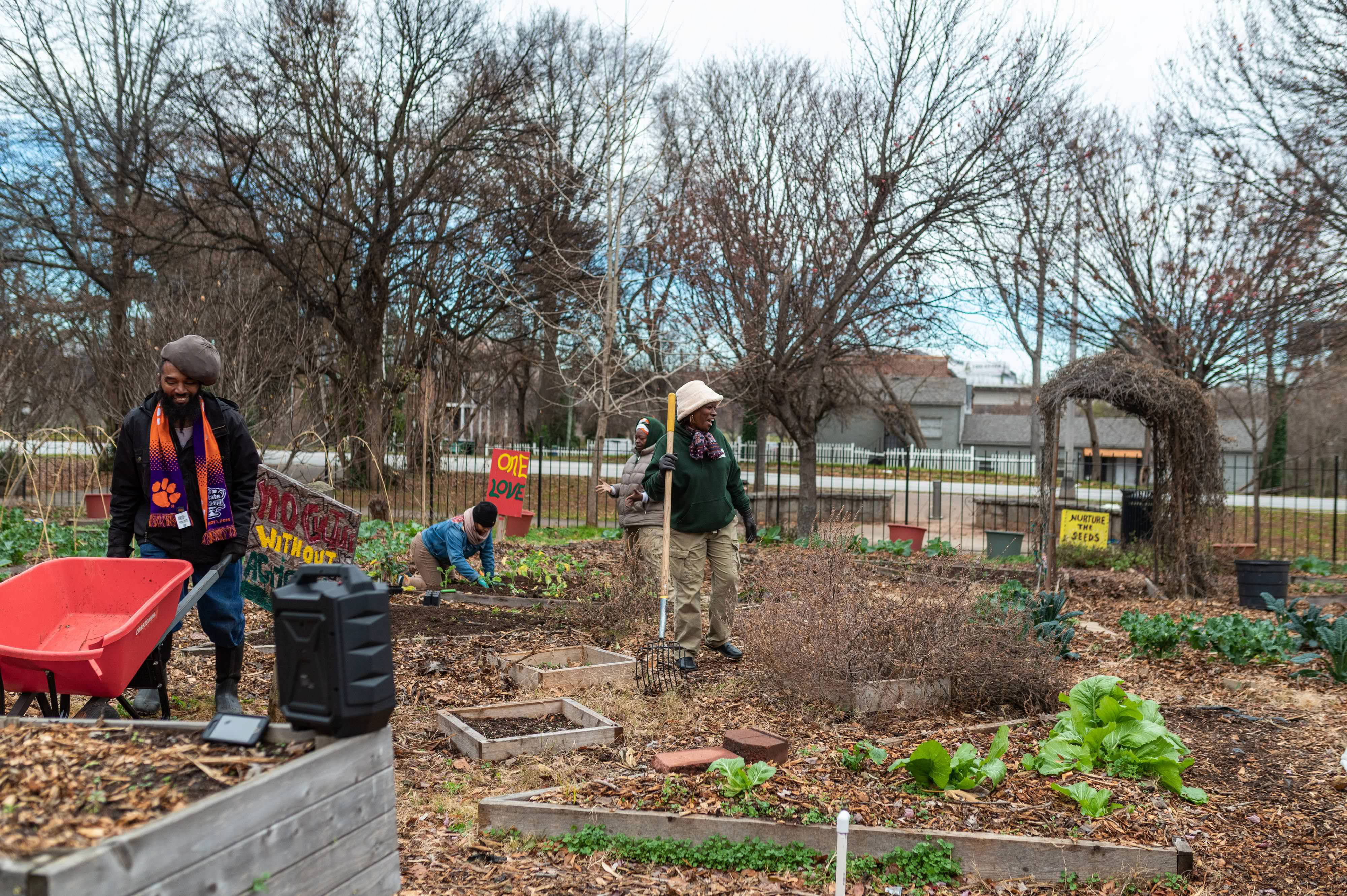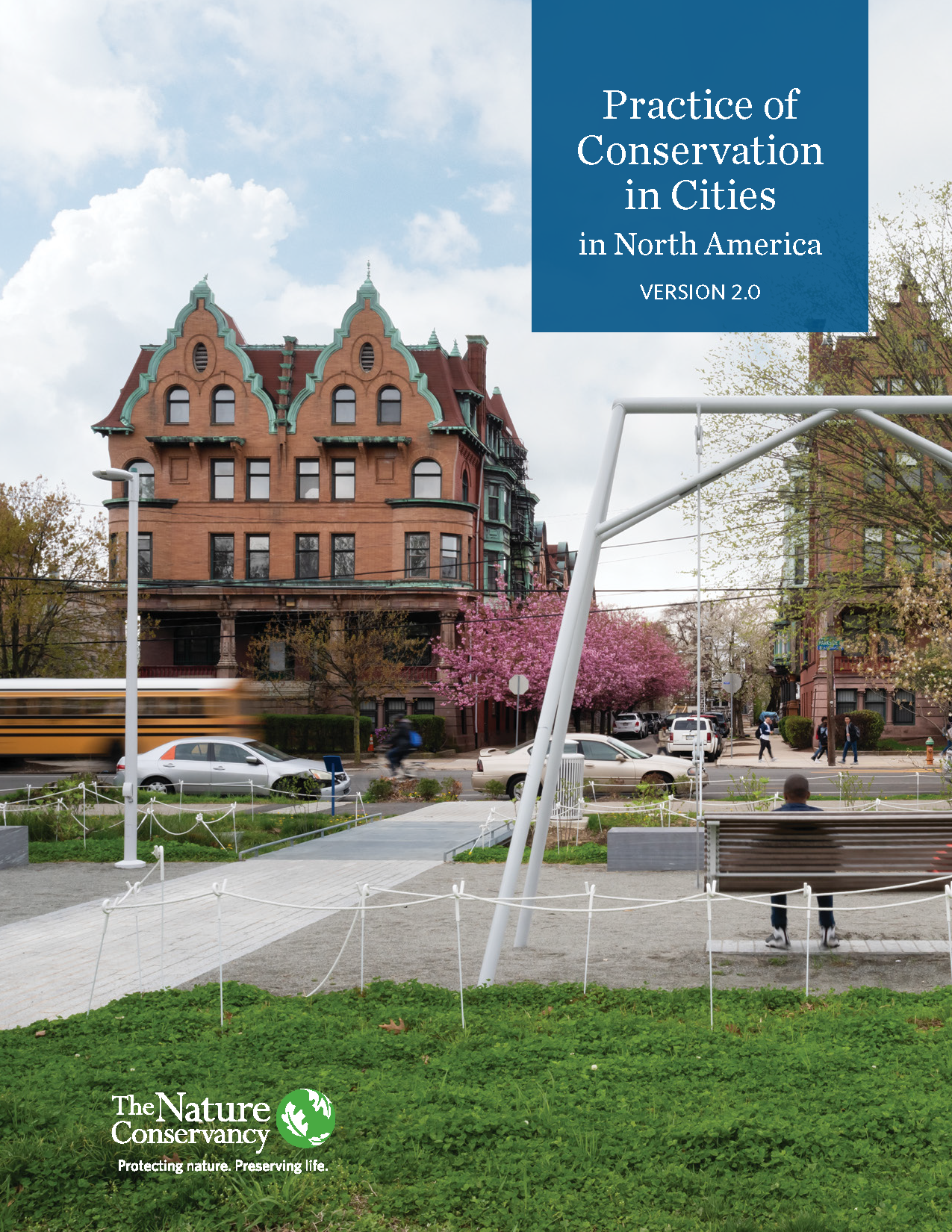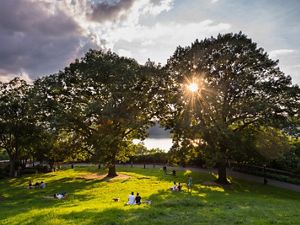Cities are vibrant, dynamic, and highly complex places—it’s not uncommon for environments in cities to change block by block, neighborhood by neighborhood. It’s why cities are worthy of our ongoing endeavors to learn, understand, and engage with people and their relationship to their environment.
Practice of Conservation in Cities reflects this, capturing the wide-ranging experiences and perspectives of The Nature Conservancy’s (TNC) Cities Network staff and partners from 2019 to 2021. This resource is the companion to the original Field Guide to Conservation in Cities, which was published in 2017 following TNC’s launch of the Cities Network in 2014.
But Practice of Conservation in Cities is less prescriptive than the original Field Guide. Within these pages are stories, strategies, and perspectives—ranging from the benefits of frontline community forests to participatory grant funding to equitable storytelling—that can support conservation practitioners and community partners on their journeys to unlocking more equitable outcomes for all city dwellers.
Within these pages are many stories of people who demonstrated amazing compassion and strength by supporting members, uplifting others, and building stronger relationships within their communities. These stories are intended to provide readers with information, guidance, and best practices, all with the understanding that conservation in cities is an evolving field.
"Wherever your conservation journey finds you and your partners, from the city center to the interconnected landscape around it, I hope the Practice of Conservation in Cities serves as a resource to help guide your community-centered approach to building trust and relationships toward a more equitable future for people and place.”
—Chris Chandler, Director of the Cities Network
Here are just a few key takeaways you’ll discover in the Practice of Conservation in Cities:
1. Equitable conservation takes the time it takes.
Whether you are at the very beginning or in the middle of your community-centered conservation journey, understand that it takes time to build strong and authentic relationships. It can and should take years to form connections in a community, rather than months. Allowing this time to grow and foster relationships through open communications, shared decision making, and accountability among all involved parties will build a foundation for long-term success.
In Albuquerque, NM, it took years of simply showing up to neighborhood events, meetings, and outings before building strong and foundational relationships with the community. In Philadelphia, it took many meals of breaking bread with community members and potential partners, in order to have that community dialogue and understand others’ mission, their work, and their goals.
“Truly equitable partnerships encourage authentic communication and invest time and resources to ensure the inclusion of various perspectives. As projects develop, flexibility, reciprocity, adaptability, and results continue to build a foundation for long-term success.”
— Myriam Dondzina, Deputy Cities Network Director
Learn more in the chapters “Cross-Cutting Practices for Partnerships” and “Place-Based Practices.”

2. The community is the expert.
Conservation work in cities requires centering both people and place. And in any place, there lies knowledge, talent, and assets. At the start of project or program, include community residents early and often, as they can provide valuable insights and historical context to a place and identify what are the community’s priorities. Making space for deep collaboration from the beginning also allows those involved to develop a sense of ownership and incorporate diverse talents, paving the way for successful outcomes.
“If your goal is a healthy, long-lived urban forest, plan before you plant. If your goal is a healthy forest that serves the needs of communities in ways that matter most to them, engage before you plan. ”
— Rachel Holmes, TNC Urban Forestry Strategist
Learn more in the chapter “Place-Based Practices: Tree Canopy Enriches Cities”
3. Invest in the art of co-creation.
For conservation practitioners, storytelling is essential in all phases of work: from scoping to fundraising to implementation to evaluation. Oftentimes, however, only few voices are heard in stories, or partners and community organizations may not have the resources or bandwidth to share their own stories. That’s why going into any project or program with intentional co-creation is crucial.
Take St. Louis, Missouri, for example. More than 20 organizations worked on a community-led research process that led to the proposal of redeveloping and repurposing a vacant, unoccupied land into Peace Park, a vibrant and beautiful place where the entire community could gather for events, entertainment, and recreation. The St. Louis partners co-wrote a storytelling grant with TNC, which led to the co-creation of a communications plan as equals, recruiting interns from the community to lead the work. One of the results was a truly co-created video story.
"The video gives an inspiring recap of the research, the vision and the joy that many people have poured into the project thus far."
— Jeff Hendred, Grace Hill Program Coordinator
Learn more in the chapter “Cross-Cutting Strategies: Storytelling in Cities”




